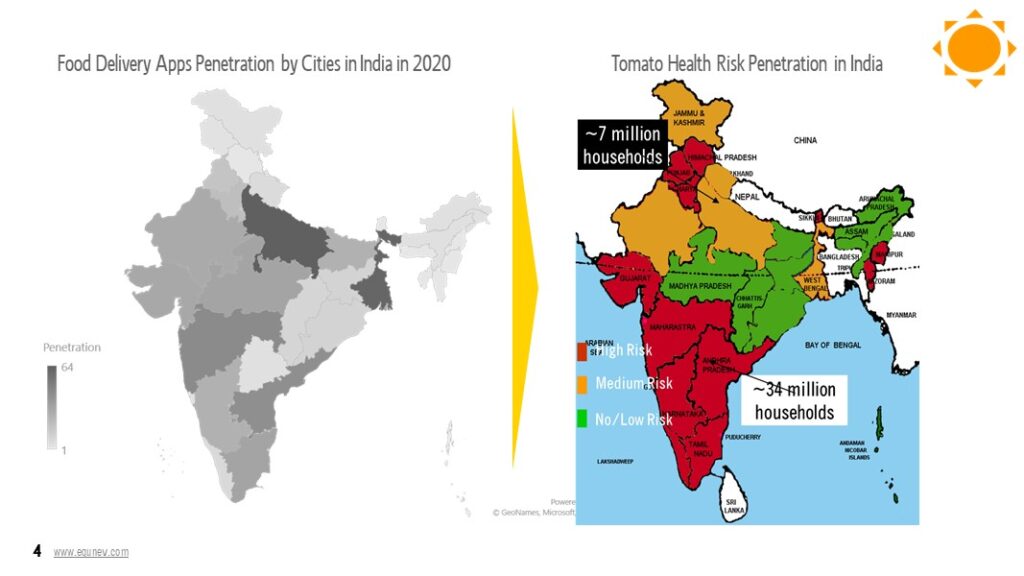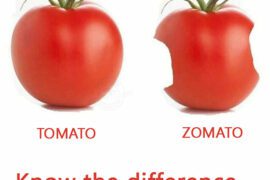Background
Finally one of the unicorns in the foodtech space has turned profitable. Zomato is going public with its IPO. With public money it will raise, will also come the public scrutiny of what it does to the public and society at large. Here are some of the data from the Zomato prospectus that summarizes the scale of its business model and its impact on Indian society.
- Total reach of Zomato is in 526 cities
- It has around 350,000 restaurants listed
- Around 41.5 million people visit its app or website in a month of which around 11 million people place orders
- It make around 400 million food deliveries in a year (averaging around 3 deliveries a month per user who places orders on Zomato)
- Zomato earns around INR 90 per order of food. Their gross order value in 2020 was around INR 230 (increased substantially during lockdown)
- Around 160,000 delivery partners are employed in the 526 cities averaging around 300 delivery partners for 3 shifts on 24/7 operations
- Industry experts say that the delivery partners drive around 6 kms (during lockdown it was 7.5 kms) from their point to restaurant and the user delivery location to meet the time commitments of 30 minutes. The radius for the restaurant to the user comes to around 5 kms (during lockdown it was 6 kms)
I am assuming the metrics for Swiggy would be around the same metrics as Zomato. Both the Food Delivery Apps must be providing tremendous time and place value to its loyal consumers but at what economics. Let me debunk this now.
Economics of Food Delivery Apps in India
Assuming 800 million food deliveries with an average radius of 5 kms, the total distance traversed would be around 4 billion kms in a year. This is equivalent to travelling between earth and Neptune. That’s a long distance in terms of the food delivery only! The cost incurred for each food delivery was INR 50 per trip. The total cost incurred and cross subsidized by the Food Delivery Apps amounts to INR 4000 crores in 2020. This costs 10 Mars Missions from India in a year!
Now let’s turn to the carbon emission of the 2-wheelers used by the delivery partners. Assuming 4 billion kms travel would require around 80 million litres of petrol for the bikes in a year. They would release around 186.16 million Kgs of carbon in the environment assuming all the bikes are 4-stroke engines. That’s not a great environmental impact! I am not assuming the impact of plastics and other packaging material used by the restaurant partners and dumped into our cities dumps every year as this is not the responsibility of the food delivery apps but the consumer and the restaurant partners as a choice.
On an average INR 230 per order would provide around 1000 calories worth of food assuming all is healthy food ordered. The impact that the consumer feels by getting time and place value is hugely negative. So far these companies doing food delivery were not in public scrutiny but the reality is very negative. Are we creating Tomatos out of the Zomato’s consumers?
Not healthy for the Food Delivery Apps Companies, their investors or their consumers.
Health Economics of Tomato!
Now lets focus on the health of the tomatos who order food. I am assuming that they are busy enough not to be able to cook or step out to the restaurants and are intelligent enough to be aware of their health risks and well being and are only ordering bunk food (anti thesis of junk food) as nobody likes to eat healthy food which is not so delicious to the taste buds. At INR 230 per average order they are consuming around 1000 calories of food. As per ICMR the recommended daily calorie intake is 2100 Kcal for urbanintes. So the average order on food delivery apps is equivalent to a single meal which is around 800 kcal .
Let’s turn to the fitness. WHO recommends that a fit person should walk 10000 steps a day. This is around 8 kms a day. The 80 million consumers of the food delivery apps (Zomato and Swiggy divided equally) would be walking around 230 billion kms in a year. This is 60 times more than what the food delivery partner of these apps travel in a year. So, the question is, what is the health risk of those who order food on these apps really walking their quota of daily distance and prefer instead the meal right on their doorsteps?
Based on the penetration of cities of food delivery and the health risks penetration, the Tomatos are equally penetrated in states where the health risks are fairly high and shows a very strong correlation to food to be served at their doorsteps.

The remedial health issues and what the public subscribing to the IPO of Zomato should be inquiring into is a subject matter of another blog which may come some other time post IPO.
Disclaimers: I do not have Zomato and Swiggy Apps installed on my mobile phone and do not order any food from the food delivery apps. I am not an interested party in pooping the party of Zomato’s IPO.

